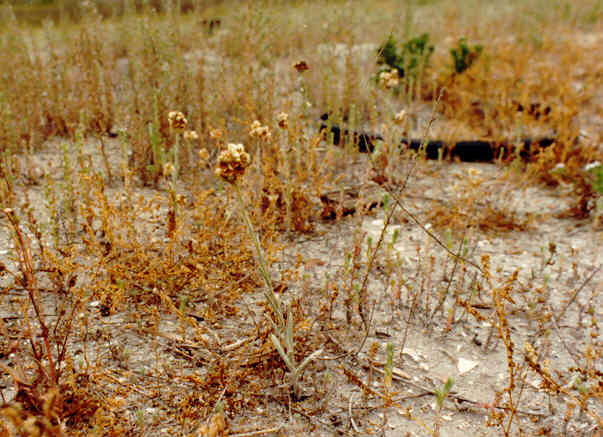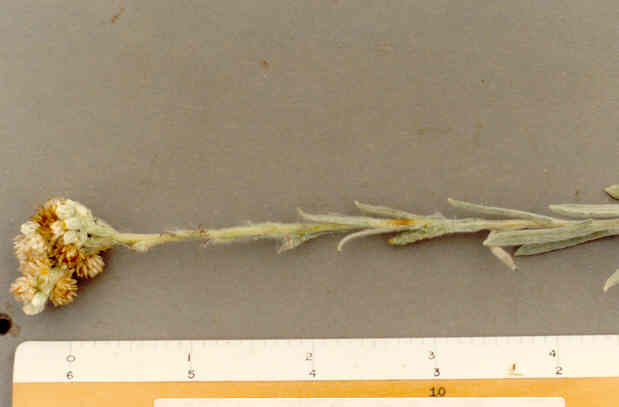
Gnaphalium luteo-album L.
Asteraceae (Sunflower Family)
Old World
 |
Gnaphalium luteo-album L.Asteraceae (Sunflower Family)Old World
Weedy Cudweed |
May Photo
Plant Characteristics: Permanently
tomentose annual weed 2-6 dm. high, the stems erect from a decumbent base,
leafy, loosely branched; lvs. linear-oblanceolate, 2-4 cm. long, 2-4 mm. wide,
obtuse the upper cauline becoming linear-lanceolate and acute to attenuate;
heads in usually several cymosely arranged terminal clusters; invol. 4-5 mm.
high, the hyaline tipped phyllaries greenish or brownish-stramineous, the inner
ones lance-oblong; corollas reddish-tipped; achenes minutely papillose.
Habitat: Occasional
along roadsides, etc., below 2100 m., Riverside
Co., Los Angeles Co., Santa Barbara Co.; to cent. Calif.; Santa Catalina, San
Clemente, Santa Rosa, Santa Barbara Ids. Flowering
all year.
Name: Greek, gnaphalon, a lock of wool, these plants floccose-woolly. (Munz, Flora
So. Calif. 171). Luteolus,
yellowish and albus, white. (Bailey 17, 10).
General: Moderately
common in the study area having been found in several locations after it was
first collected on the road to Shellmaker Island in 1988.
Photographed there. On an
outing with John Johnson in May 1988, I would have passed this plant by as a
small G. microcephalum, however, Mr.
Johnson took a specimen and later identified it as G.
purpureum. Further study showed
that it was neither species but is G.
luteo-album. (my comments).
G. polycephalum was used by the
peasants of Europe as a pipe tobacco. It
is an astringent. Irritations of
the mouth and throat are said to be relieved by chewing the leaves and blossoms;
and the leaves applied to bruises and other local irritations are very
efficacious. (Meyer 73, 224).
Text Ref: Abrams Vol.
IV 468; Munz, Flora So. Calif. 171.
Photo Ref: May 2 88 #
27,28.
Identity: by R. De Ruff.
Computer Ref: Plant Data 370.
Have plant specimen.
Last edit 10/20/02.
 |
May Photo